Your freelance business is only as good as your clients.
If you have a shocker of a schedule that’s 99% freelance clients from hell, you’re going to have a bad time. On the flipside, if you have a dreamy mix of wonderful clients that might also secretly be unicorns, you’re really going to enjoy yourself.
But sometimes a client can be a wolf in sheep’s clothing.
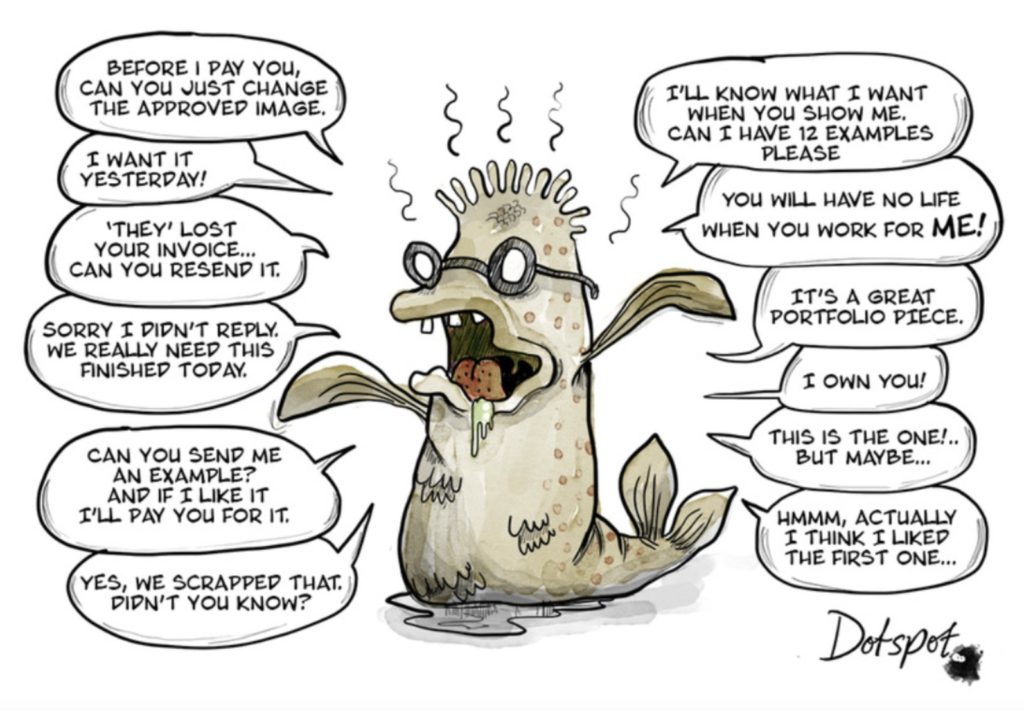
Illustration by the wonderful Dotspot
That is, they look all sweet, innocent, and nice at the start, but quickly turn into a hideous monster that should be kept locked in a dark room somewhere (I’m not saying you should do this with any of your clients. Please don’t).
This is where it can get tricky, especially if you don’t spot the warning signs early.
There have been far too many times where I’ve only realised a client isn’t quite as dreamy as I thought too far down the line.
It made it much harder to extract myself from the situation, especially if the contract had been signed and sealed.
Okay, first things first: what is a freelance client from hell?
Do they all come with a badge that calls them out?
In short, no. They come in all different shapes and sizes and it really depends on what you’re looking for in a client.
To get a more generic feel for what makes a freelance client a bad one (and what makes them a good one!), I put a call out on Twitter.
I’m going to let this talented and experienced lot do the talking for me because, while I’ve had my own experiences with very real, very bad clients, we’re all in this together.
The 7 Characteristics of a Great Freelance Client
1. They Don’t Vanish When You Need Them
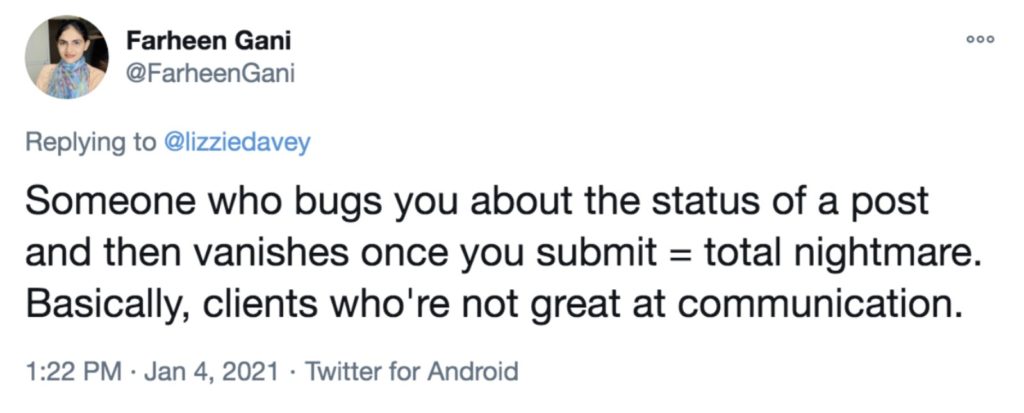
Farheen nails it with her description of a freelance client from hell. Someone who is constantly on your back only to disappear when you need them the most is not a good client.
As with anything in life, communication is key. Clients that keep an open line of communication without suffocating you and spamming your inbox are absolute keepers.
2. They Are Clear On Who Your Point Of Contact Is
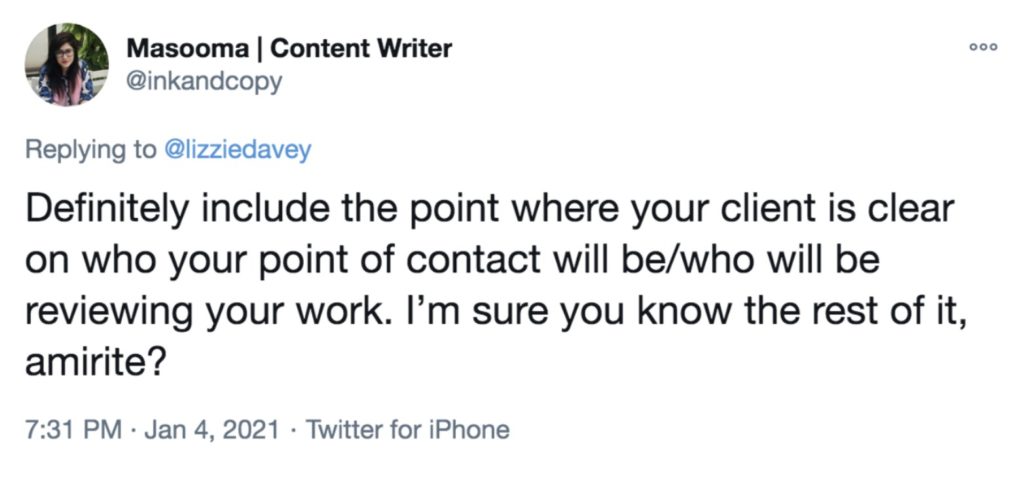
Masooma is spot on when she calls out clients who don’t give you a clear point of contact.
I’ve been in many a situation where a client hasn’t told me their entire team will be editing a draft, so all of a sudden I’m getting emails from “Brad-who-I’ve-never-heard-of” who has some questionable grammar suggestions and “Brenda-from-accounts” who shouldn’t be chiming in at all.
3. They Respect Your Opinion As An Expert
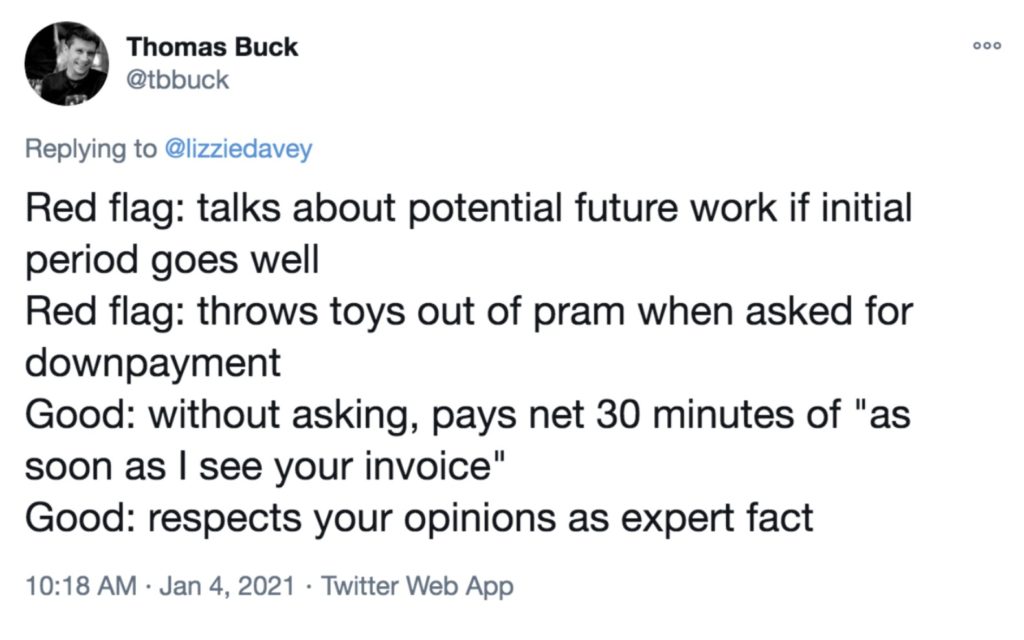
Here’s the deal: you’re a freelancer not an employee, and clients hire you because they need your expertise.
As Tom points out, good clients respect that you’re the expert and don’t undermine your opinions. They also pay as quickly as possible (who doesn’t want that?!).
On the flipside, Tom points out some red flags to look out for. These include clients that talk about potential future work (the emphasis is on potential here) and those that won’t pay a deposit.
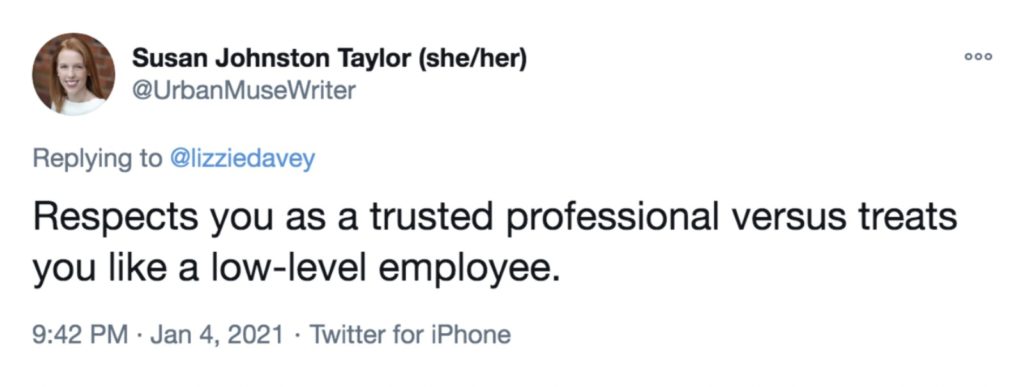
Susan sums it up nicely: a good client will respect you. They won’t treat you like their lowliest employee.
4. They Are Clear About Requirements and Deliverables
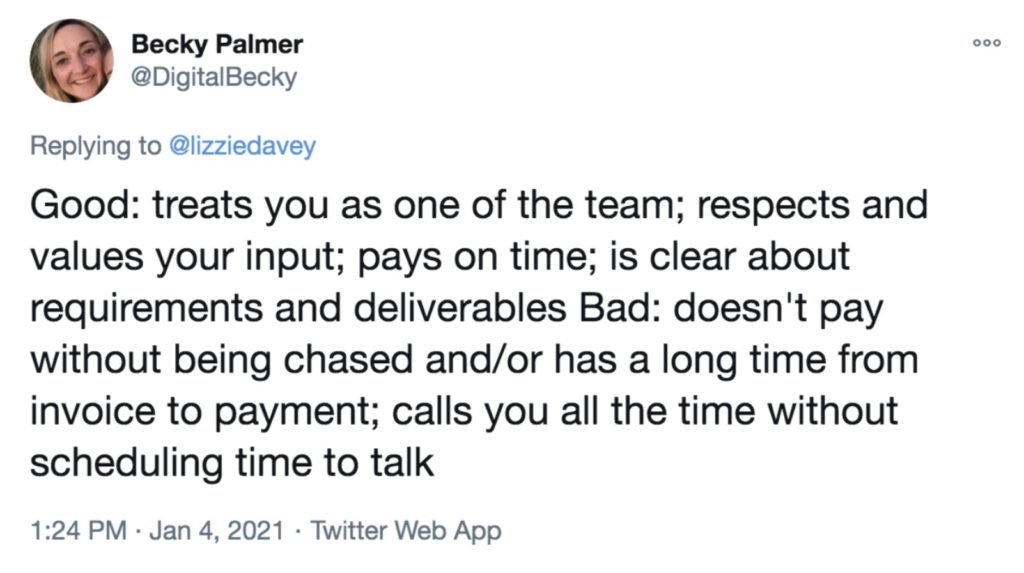
A good client knows what they want.
Not only that, but they are clear about when they need it. Becky highlights the importance of a client who knows what they want, values your input, and treats you as one of the team.
Bad clients don’t pay on time or have to be chased and call you all the time without scheduling. This can be a huge time-suck – trust me, I’ve been there. I still shudder when I think about the client that consistently called me at 9pm on a Saturday (I wouldn’t put up with that any more!).
5. They Include You In the Process

A good client welcomes you with open arms and invites you to be a part of their team (but not too much a part of their team, because you’re not an employee, remember!). You’re a major part of the process, and a client that knows that and ensures you’re kept in the loop is a keeper.
6. They Let You Work the Way You Want
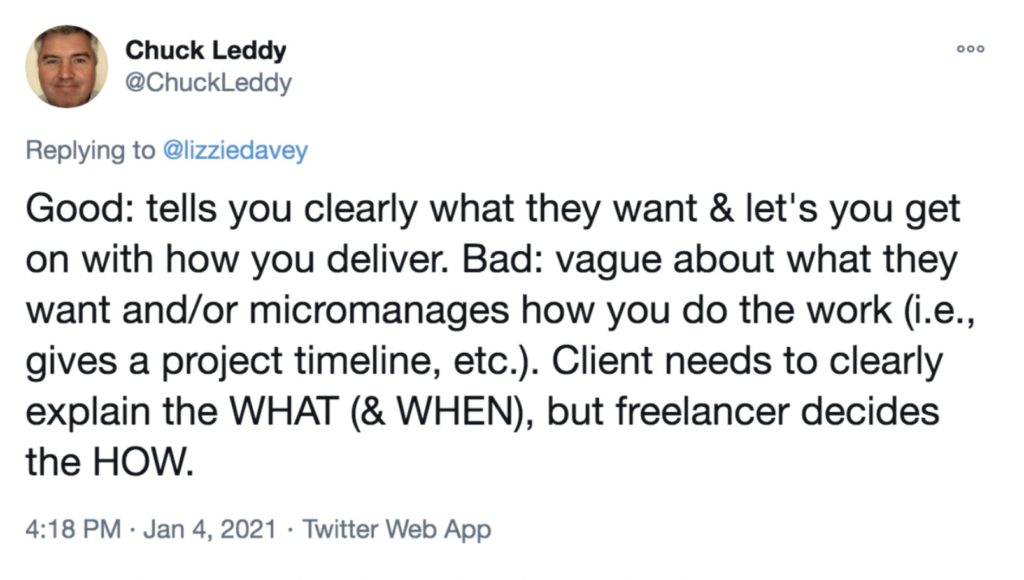
Imagine having to work with hundreds of different apps and in various different ways depending on the client. It would be a nightmare to keep track of projects and correspondence, right?
This is why a good client will let you manage how you do the work.
They’ll let you decide the format you deliver it in, what programs you use, and any other processes you regularly put in place to make sure you stay on top of your work load.
7. They Pay On Time

Come on, would it really be a list about what makes a good client if we didn’t have something about paying on time here?
Us freelancers are notoriously bad about talking money, but it’s an integral part of our business. Note how I say business, because that’s exactly what we are. We can’t operate without money. And clients that pay on time help us keep that cash flow smooth and steady.
It’s a nightmare having to chase invoices. It feels seedy and wastes time, which is why clients that pay on time are an absolute dream.
The 5 Signs of a Freelance Client From Hell
1. They Have Unrealistic Expectations

Clients with unrealistic expectations are the worst. They expect you to get a brand new post ranking in the top spot on Google for the most competitive keyword in the world in two hours.
And when you don’t achieve it for them? They get disappointed.
Good clients, on the other hand, know what can and can’t be achieved with the resources and timelines they give you.

To sum it up, a nightmare client will expect you to create amazing things out of nothing.
I once had a client who asked me to write a set of Google Ads but didn’t give me any information. They didn’t tell me where the ads would be pointing, what the ads were promoting, and who the ads were aimed at.
When I asked for clarification, they simply said “we don’t know yet, we’ll see what we think when we get the copy”.
I stopped working with them immediately.
I mean, talk about setting yourself up for failure!
How am I supposed to create high-converting ads without any (and I mean literally no) information at all?! My mind still boggles when I think about it.
2. They Won’t Sign a Contract

Contracts keep everyone safe. If a client refuses to sign one (particularly if they say it’s “pointless”, like Benahili says here), it’s a big red flag.
You have to ask yourself why they don’t want to sign it.
3. They Don’t Keep You In the Loop
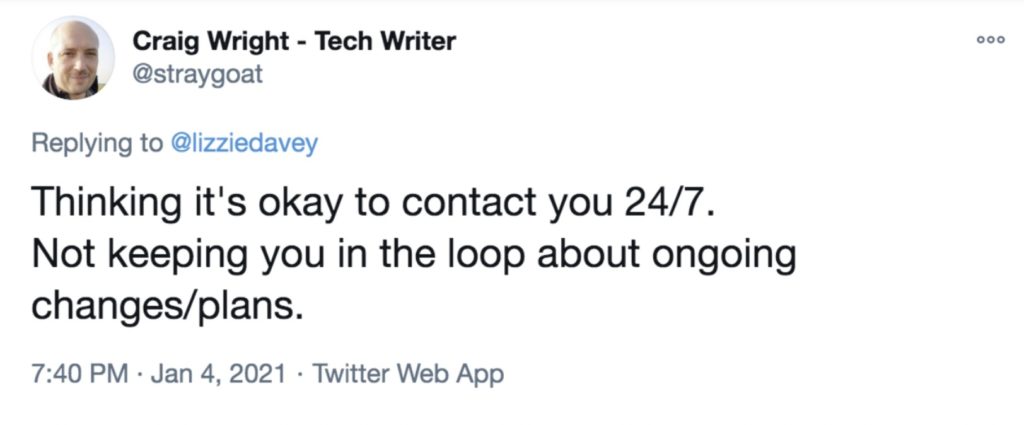
This is kind of the opposite end of the spectrum to a good client that communicates well.
There have been a few times where a client has dropped off the face of the earth and I get an email from a completely different person a few weeks later saying my original contact left.
It’s good manners to keep freelancers in the loop, especially if a change impacts them in some way.
4. They Demand Immediate Attention

If I had a pound for every time a client went dark for weeks only to come back and ask me for a piece of work RIGHT NOW, I’d be rich.
Good clients don’t demand your immediate attention. They know you have other clients to cater to and a schedule, so they won’t demand you do their work right away and put everything else on the back burner.

On top of this, they won’t ask for last minute requests and put “urgent” (read: not urgent at all) deadlines on projects.
Don’t put yourself out because another person can’t manage their time properly.
5. They Increase the Scope of the Project
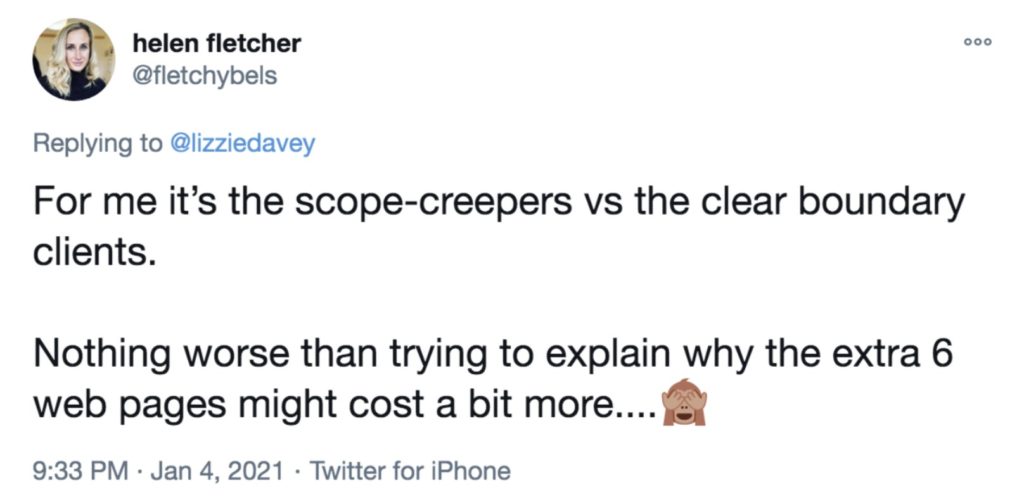
Increasing the scope is fine if it’s laid out early on, agreed upon by all parties, and well compensated for.
What’s not okay is when clients sign a contract and then start asking for “just a little bit more”, “just another tweak here”, and “can you just do this little thing too it won’t take much time at all.”
Scope creep is a real danger for freelancers as it can become a huge, unpaid time-suck. Nightmare freelance clients will try their luck with this all the time and will probably kick up a fuss when you charge them more for it.
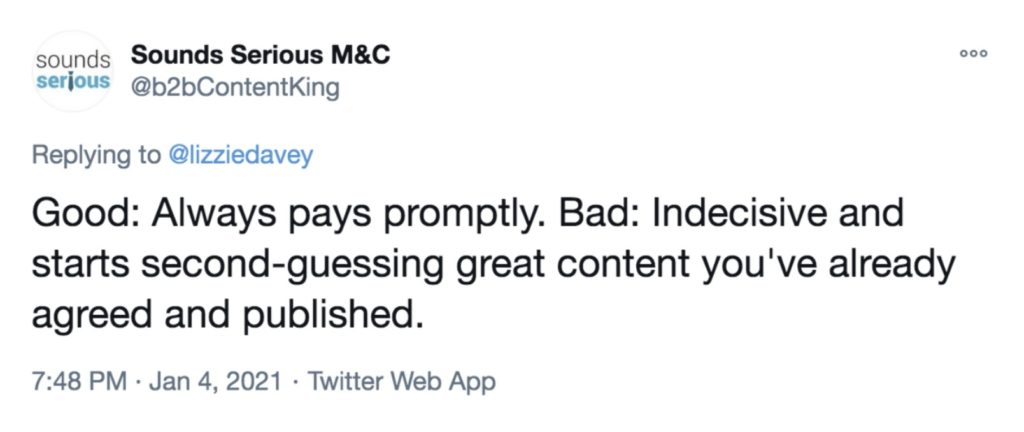
Another form of scope creep is second guessing what you’ve already agreed on and becoming indecisive once the project has already kicked off – whichever way you look at it, scope creep isn’t ideal.
How to Screen Clients Effectively
Prevention is better than cure, especially when it comes to avoiding nightmare clients. Here’s how to screen potential clients and save yourself stress:
- Prioritize Clear Communication
From the first message, pay attention to how well the client communicates. If they’re clear about the project goals and expectations, you’re off to a good start. But if their emails are vague or full of conflicting info, consider it a red flag. - Ask Smart Questions
During discovery calls, ask about their workflow and past experiences with freelancers. Listen closely: if they badmouth every previous collaborator, they might be the common denominator. - Discuss Budget Upfront
A great client will respect your rates. If they haggle too much, suggest future unpaid work, or offer “exposure” as compensation, move on. Your time is valuable. - Clarify Availability and Deadlines
Set boundaries around when you’re available and discuss realistic turnaround times. If they demand constant availability or rapid responses, think about whether that aligns with your work style. - Trust Your Gut
If something feels off, listen to your instincts. Sometimes a subtle red flag or gut feeling is all the warning you need.
By being intentional and setting expectations early, you’ll attract more dreamy clients and spend less time navigating messy relationships!
Avoid Working With Freelance Clients From Hell
It takes a while to get your “clients from hell” radar working properly (it took me a good couple of years), but you’ll soon start to notice the signs from good and bad clients. The earlier you can suss out whether a client is going to be a nightmare to work with, the sooner you can point them in another direction and free up space to work with a dreamy client instead.
Of course, you should use your own judgement here too.
I’ve had lovely clients who never creep on scope or ask for work outside the set scope, but they need reminding when it comes to settling their invoice. If they pay up as soon as I remind them, it’s all good.
It’s up to you to weigh up what’s worth it and what’s not, and the only way you’re going to be able to do that is if you get stuck in.
Good luck!





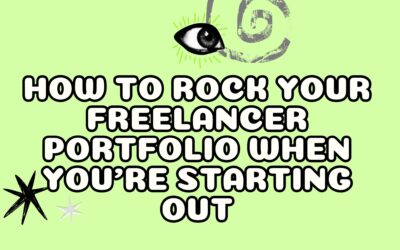
0 Comments